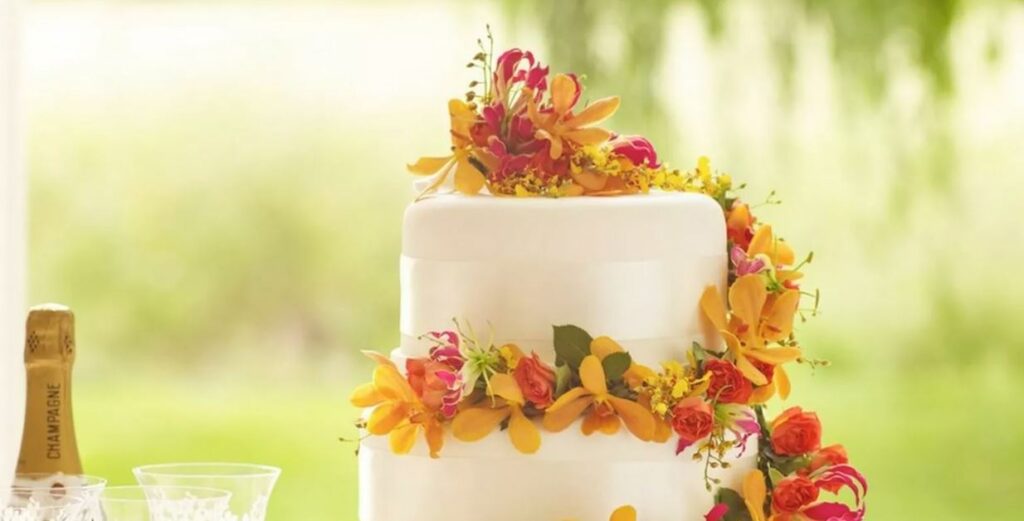Whether you are planning a grand event or simply trying to bring a touch of nature’s beauty into your home, the art of flower selection is a vital part of any floral design process. Picking the right flowers for your arrangement is more than just selecting blooms based on their colours—it’s about considering factors like shapes, sizes, textures, and colour palettes, as well as the overall aesthetic you aim to create. This blog post will explore choosing the perfect blooms to make your floral designs truly captivating.

The first step in flower selection is defining the purpose of your floral design. Are you crafting a romantic centrepiece for a wedding? Opt for flowers that symbolize love, like roses or peonies. You might choose blooms associated with the recipient’s birth month for a birthday bouquet. Knowing the context of your design will guide you toward the appropriate flower choices.
Bloom Shapes
The shape of a flower plays a pivotal role in defining the structure of your arrangement. Essentially, there are three types of flowers based on their shapes: line, mass, and filler.
Line flowers, such as snapdragons and delphiniums, are tall and thin. They provide height and establish the skeleton of your design. Mass flowers, like roses, lilies, or hydrangeas, are usually large and colourful. They become the main focal point and add weight to your arrangement. Filler flowers are small and often clustered, like baby’s breath or Queen Anne’s lace. They add fullness to the design and tie the line and mass flowers together.
Bloom Sizes
Size is another critical element. A balanced floral arrangement often involves a mixture of large and small blooms. This creates a sense of depth and variety, making the arrangement more visually appealing. Larger flowers act as the focal points, drawing attention and setting the tone of the design. Smaller blooms complement the larger ones, balancing and preventing the arrangement from becoming too overwhelming.
Textures
Texture adds a unique depth and interest to floral designs. Contrasting textures can create a dramatic effect, while similar textures bring harmony and consistency. For example, a rose’s silky petals paired with a dahlia’s feathery softness can evoke a luxurious, romantic feeling. Alternatively, using many spikey or rough-textured flowers, like sea holly or thistles, can create a more rustic and earthy vibe.
Colour Palettes
Colour is the first thing that comes to mind when selecting flowers. Colours evoke emotions and set the tone of your design. You can use analogous colours (those next to each other on the colour wheel) for a harmonious and serene look. On the other hand, using complementary colours (those opposite each other on the colour wheel) will create a vibrant and high-contrast arrangement.
Remember, however, that it’s not just about individual colours but the overall colour scheme. Consider the occasion, the season, and the colours of your environment to create a fitting palette.
Combining Flowers Effectively
When combining flowers, consider all the elements mentioned above. Make sure there’s balance in shape, size, texture, and colour.

Begin with your line flowers to establish the structure of your arrangement. Next, add your mass flowers, focusing on achieving a balanced look. Depending on your desired style, these can be grouped or spread throughout the arrangement. Lastly, incorporate the filler flowers to fill gaps and tie the design together.
As a tip, odd numbers often look better than even ones in arrangements. Odd numbers create more visual interest and lead the viewer’s eye through the design.
Seasonality and Sustainability
Finally, consider the seasonality of flowers. Not only does this allow you to work with the freshest blooms, but it’s also a nod towards sustainability, supporting local flower farms and reducing your carbon footprint.
In conclusion, flower selection involves much more than meets the eye. By considering the bloom shapes, sizes, textures, and colour palettes, you can create floral designs that are aesthetically pleasing, tell a story, and evoke emotions. Remember, the key is to find a balance between these elements and letting your creativity shine through. Each floral design is a personal expression, so don’t be afraid to experiment and find your unique style. Happy arranging!


